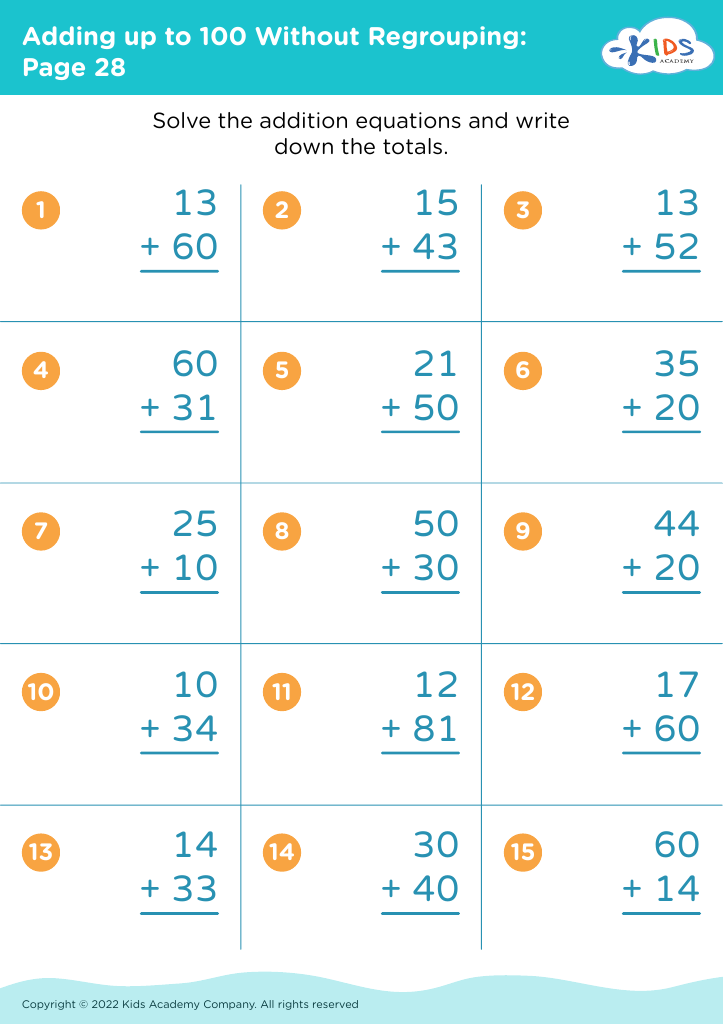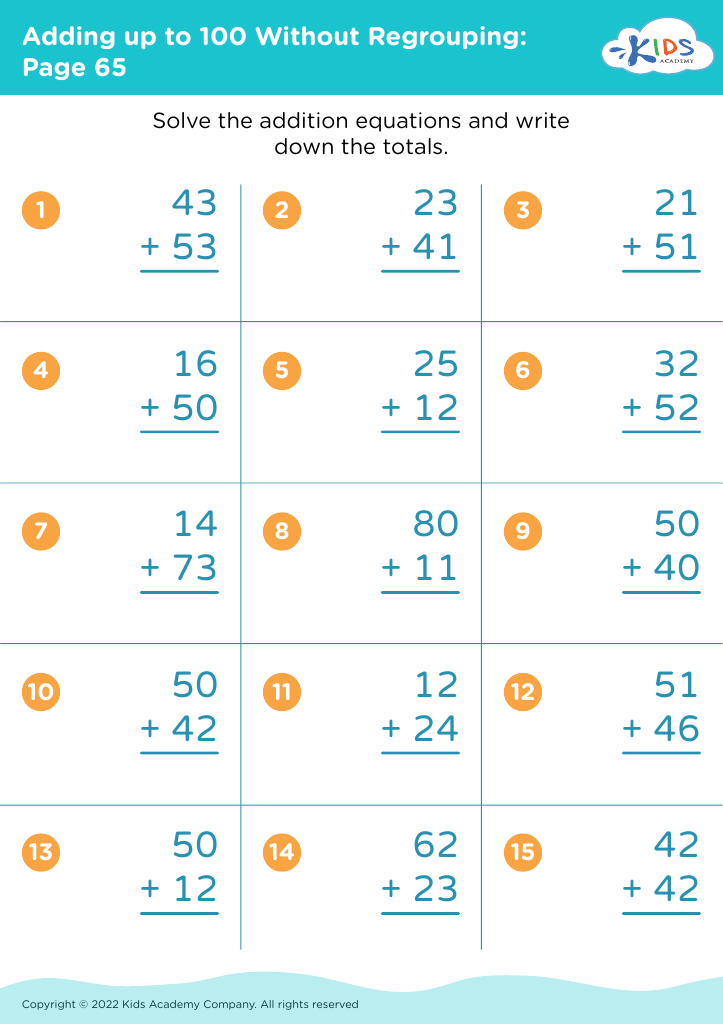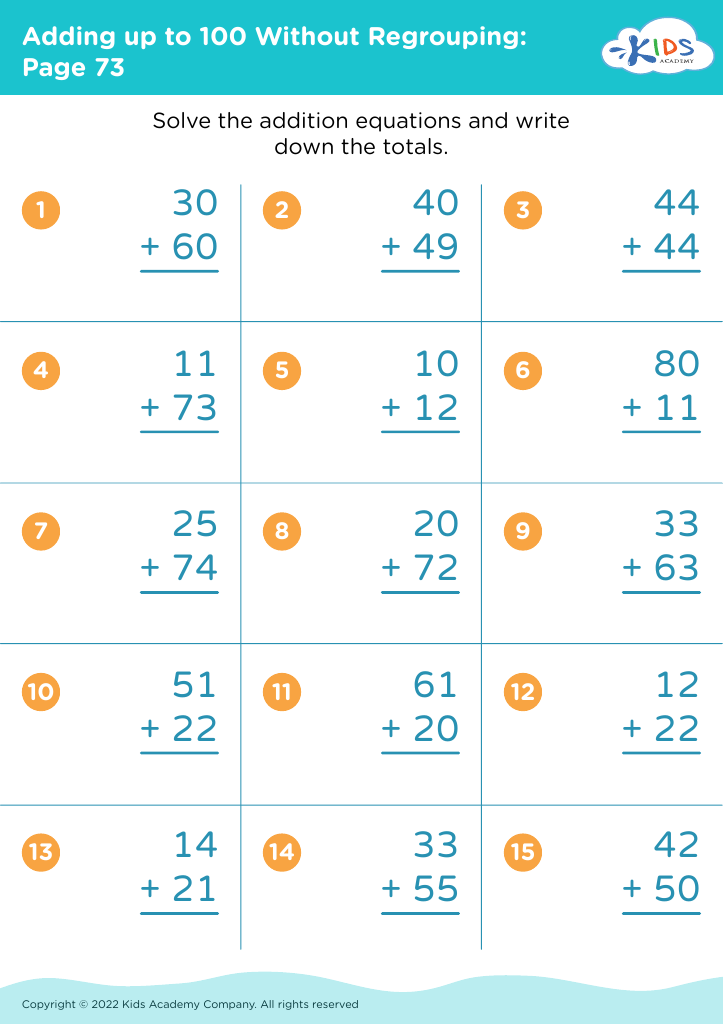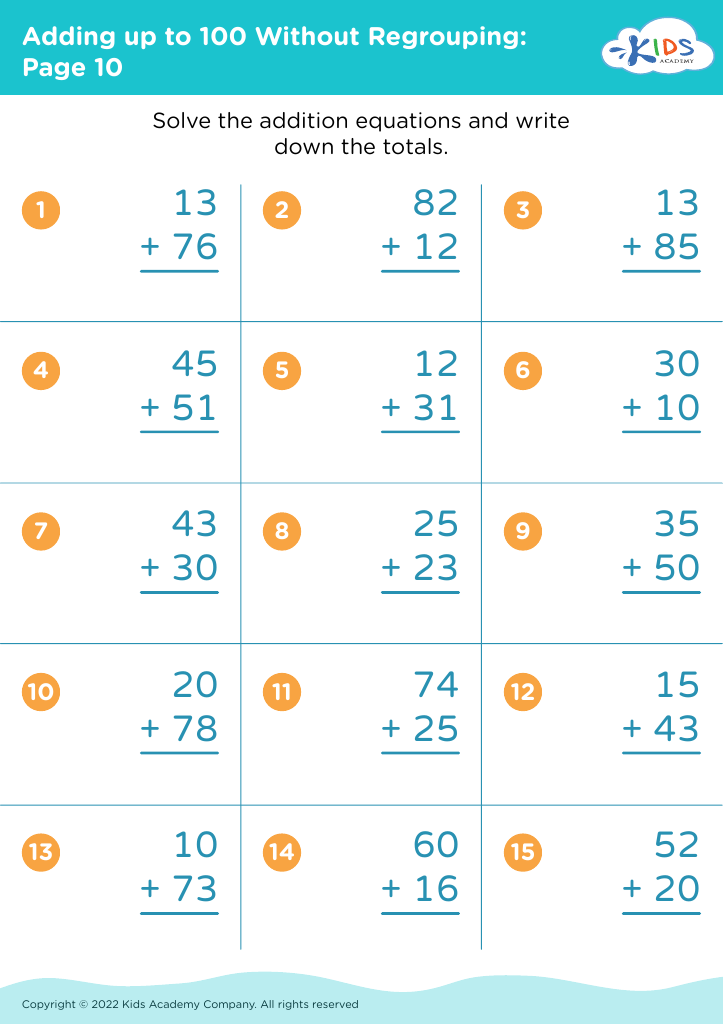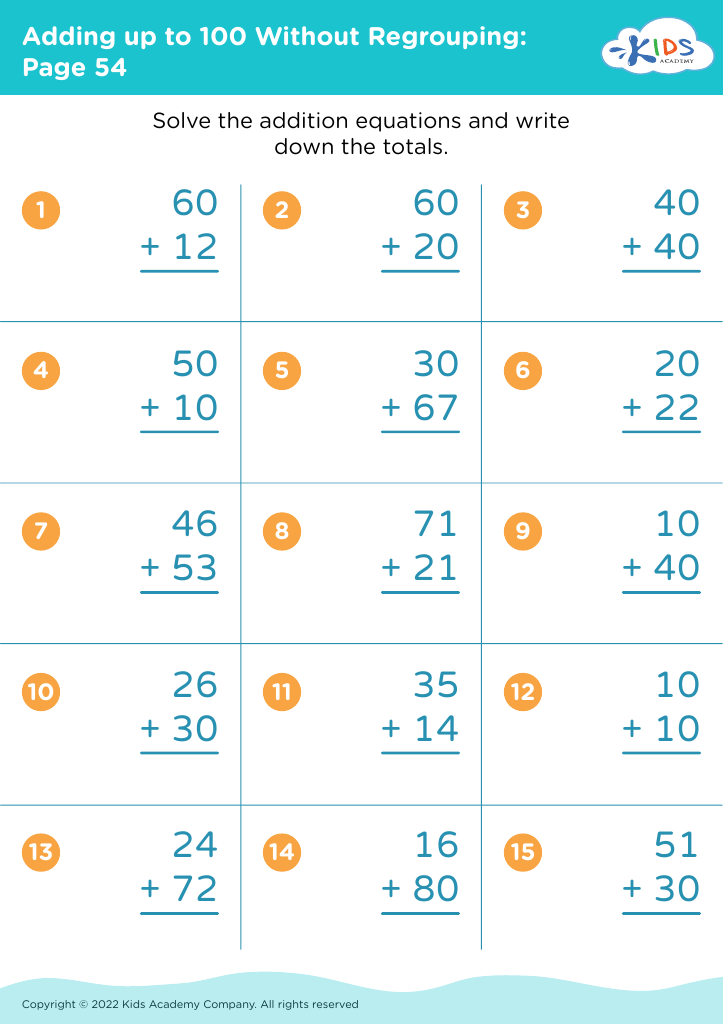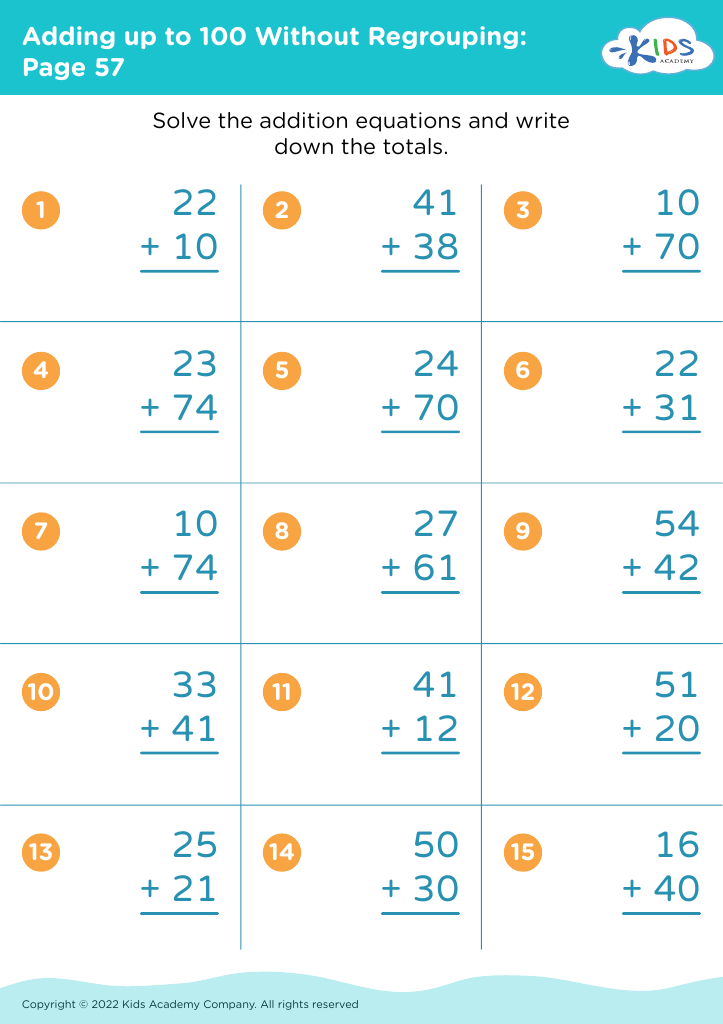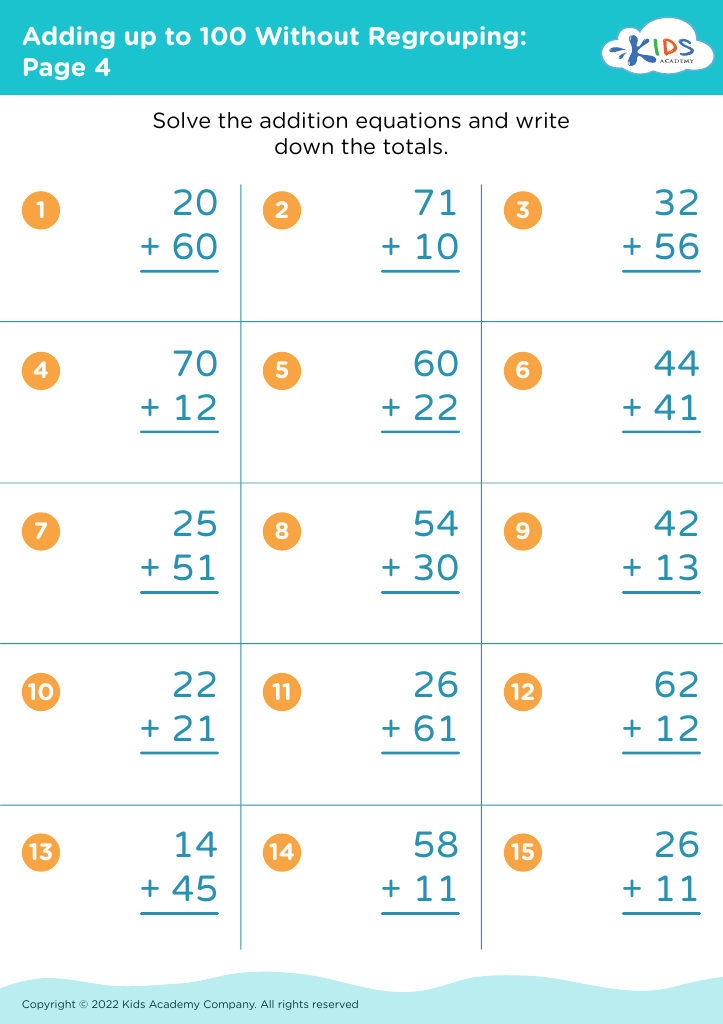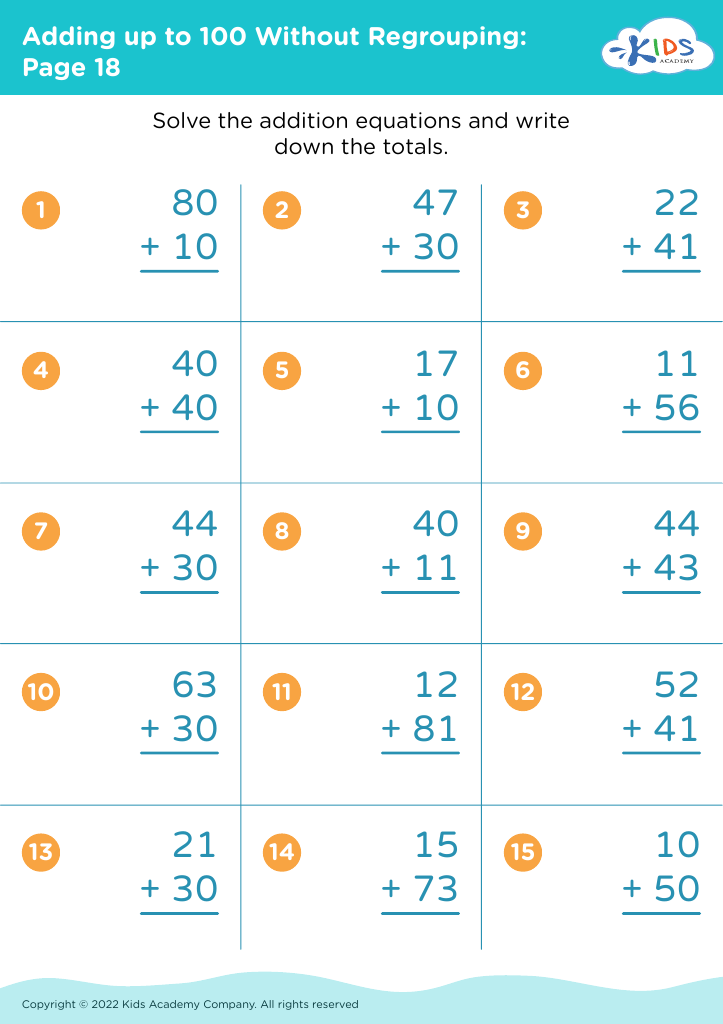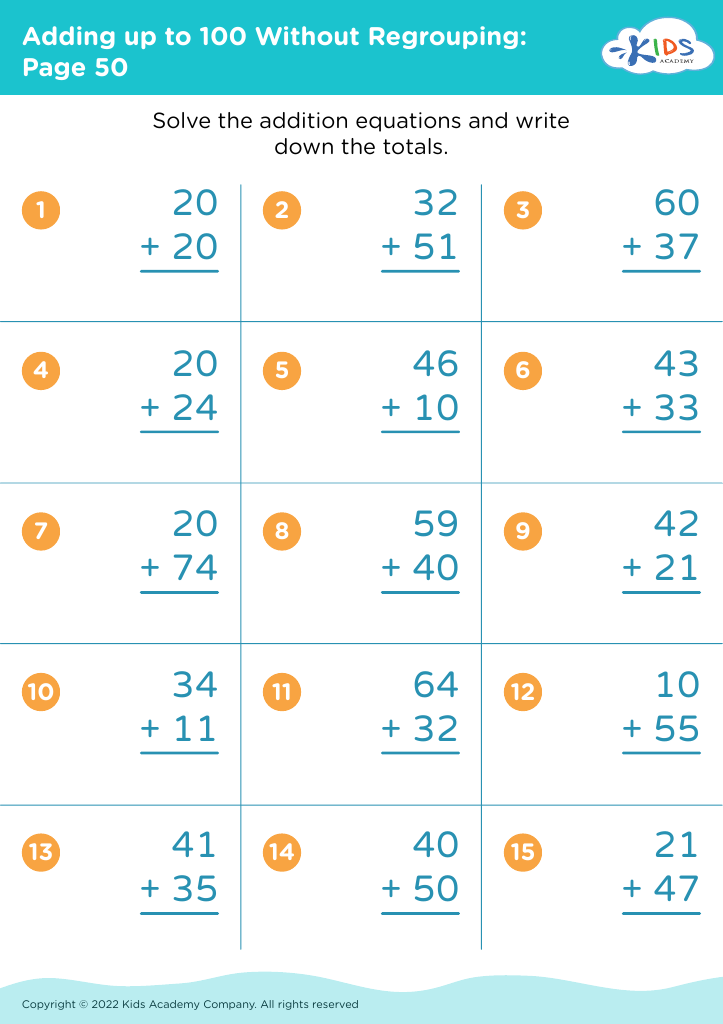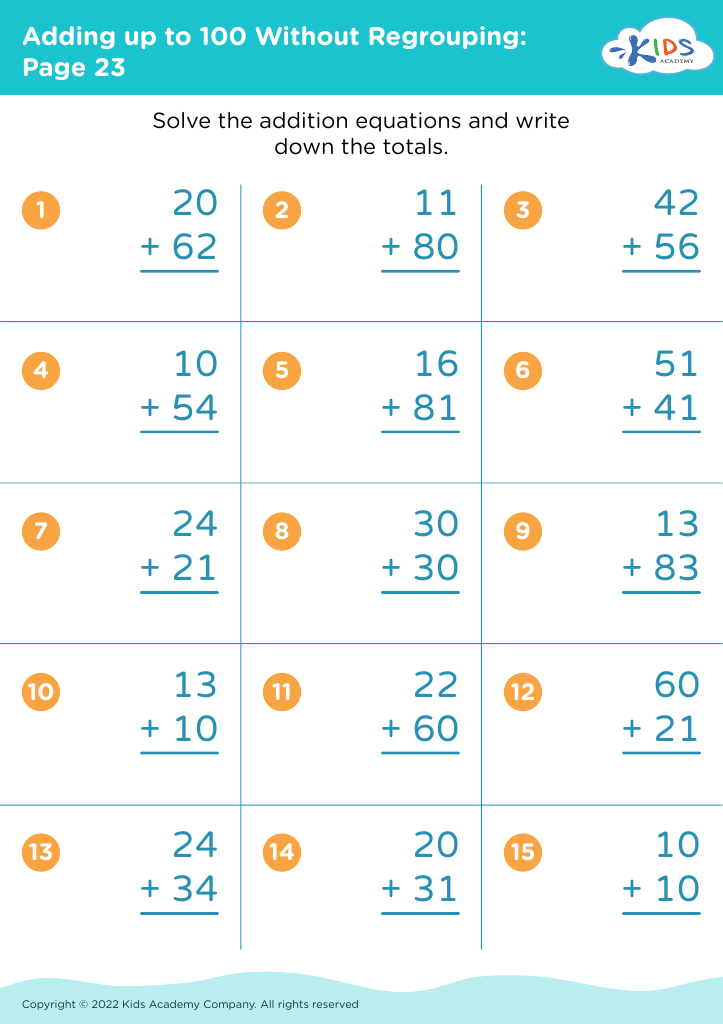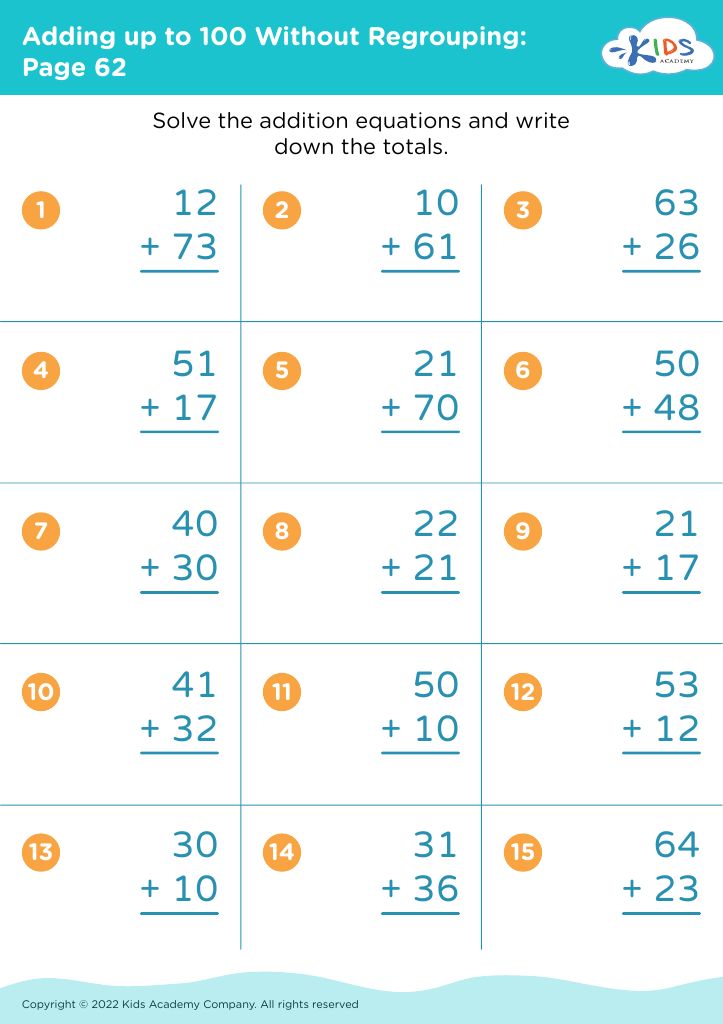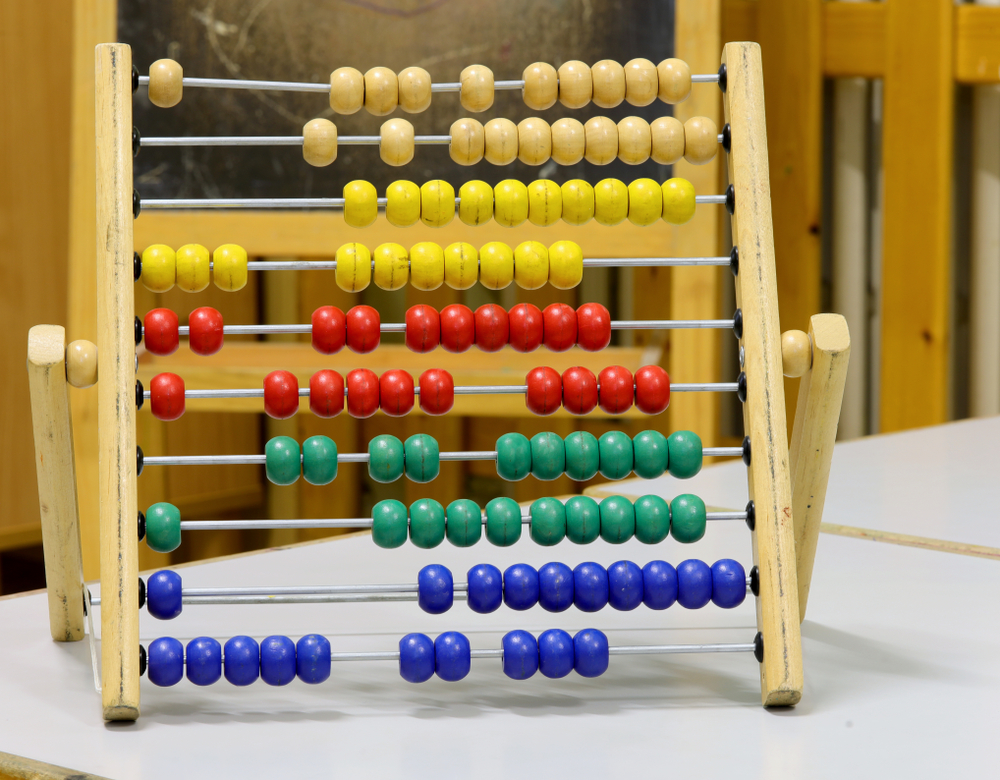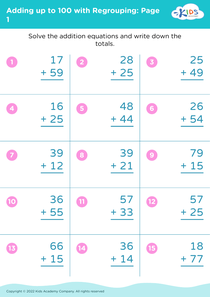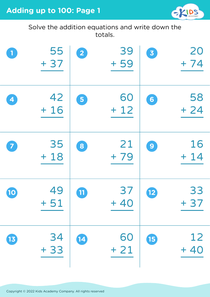Comparing Fractions Adding up to 100 Without Regrouping Worksheets for 7-Year-Olds
11 filtered results
-
From - To
Welcome to our "Comparing Fractions Adding up to 100 Without Regrouping Worksheets" designed specifically for 7-year-olds! These engaging worksheets will help young learners confidently compare fractions that total 100, reinforcing addition skills without regrouping. Through fun and interactive exercises, children will develop a strong understanding of fractions, enhance their problem-solving abilities, and build foundational math skills. Perfect for parents or teachers, these worksheets include colorful visuals and clear instructions to keep students motivated and excited about math. Encourage your child's journey to mathematical proficiency with our thoughtfully crafted resources that make learning both effective and enjoyable!
Understanding how to compare fractions that add up to 100 is essential for 7-year-olds, and it is crucial for parents and teachers to take notice of this skill. First, it builds foundational math skills. Comparing fractions helps children develop a solid understanding of proportions and equivalence, which are key concepts in mathematics. It also enhances critical thinking as children learn to analyze and assess the values of different fractions.
Moreover, successfully comparing fractions lays the groundwork for future math concepts. Mastering this skill without regrouping ensures that students can confidently tackle more complex equations, such as adding or subtracting fractions with different denominators later on.
Encouraging students to understand fractions in the context of 100 fosters a practical understanding of their everyday applications, from calculating percentages to dealing with money.
Furthermore, this conceptual grasp encourages a positive attitude towards math, reducing anxiety around numbers typically encountered in higher grades. For parents and teachers, guiding children through this process not only aids academic performance but can also instill a lifelong appreciation for mathematics, making it an important focus in early education.
